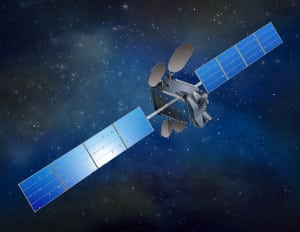Latest News
[Via Satellite 12-05-2014] Spanish satellite operator Hispasat has selected Space Systems Loral (SSL) to build its next satellite: Amazonas 5. Based on the SSL 1300 platform, Amazonas 5 is a multi-mission satellite to supply the full capacity of the Amazonas 4A, and redefine the Amazonas 4B mission originally contracted to Orbital Sciences in 2012. The Orbital-built Amazonas 4A satellite experienced an anomaly in April 2014 related to its power subsystem. Redefining the 4B mission was one of the measures taken by Hispasat in attempt to minimize any impact the anomaly might have, the company said in a statement.
Speaking with Via Satellite in August, Hispasat CEO Carlos Espinós said that it was clear the incident would reduce the Amazonas 4A’s capacity to some degree, although it would in no way have a negative impact on services, since it is a growth satellite rather than a replacement one.
“When working in this industry, there is always a chance that faults of this kind may occur and we are not the first operator that something like this has happened to,” he said. “It is for this reason that we have an insurance policy that covers all possible losses, thus keeping economic impact to a minimum. The contingency plan that we have set out will enable us to complete the capacity lost in a short period of time.”
The Amazonas 5 mission takes on the capacity of both Amazonas 4A and Amazonas 4B. Espinós said the fault in the Amazonas 4A would not drastically impact the company’s growth plans in Latin America, which as become Hispasat’s top market.
The Amazonas 5 will support Ku-band and Ka-band payloads, with the 22 Ku-band transponder payload designed to provide Fixed Satellite Services (FSS) for television, corporate networks and other telecommunications applications across Latin America in three distinct coverage areas. The 35 Ka-band beams make up the satellite’s high throughput payload, covering Brazil, Mexico, Colombia, Ecuador, Peru, Chile, Costa Rica and Venezuela.
Hispasat began providing High Throughput Satellite (HTS) services in Latin America with Amazonas 3 in 2013. Espinós described the market opportunity for HTS as especially interesting because of a combination of limited telecommunication infrastructure and growing demand fueled by economic growth and social development.
“In this context, satellites are a very competitive solution that have great reach in the market. There are a number of projects underway; some are government driven in the area (such as Colombia, Mexico or Brazil, in which Hispasat is participating), whilst others are driven on the initiative of private operators. Faced with this need, the Ka-band based HTS capacities may be a more appropriate solution,” he said.
SSL has built two satellites for the Hispasat that are currently in orbit, with another in backlog, bringing the total number of orders from Hispasat to four. The company is currently working on Hispasat 1F, ordered last July. The satellite will replace Hispasat 1D at 30 degrees west with payloads in Ku, Ka and C band. The Amazonas 5 satellite is currently scheduled to launch in 2017.
Hispasat’s next satellite to launch is Hispasat AG1. OHB Systems of Germany is building the satellite with Ku- and Ka-band payloads for a 2015 launch by Arianespace. With these new satellites Hispasat aims to continue to bolster its business in Europe and the Americas.
“Our aims are focused on continued growth, from both an organic point of view, with new orbital positions, new satellites and searching for partnerships, and an inorganic point of view, searching for operations with other companies. In both cases, we are looking for opportunities that enable us to keep expanding our impact on strategic and high-growth markets,” said Espinós.
Get the latest Via Satellite news!
Subscribe Now